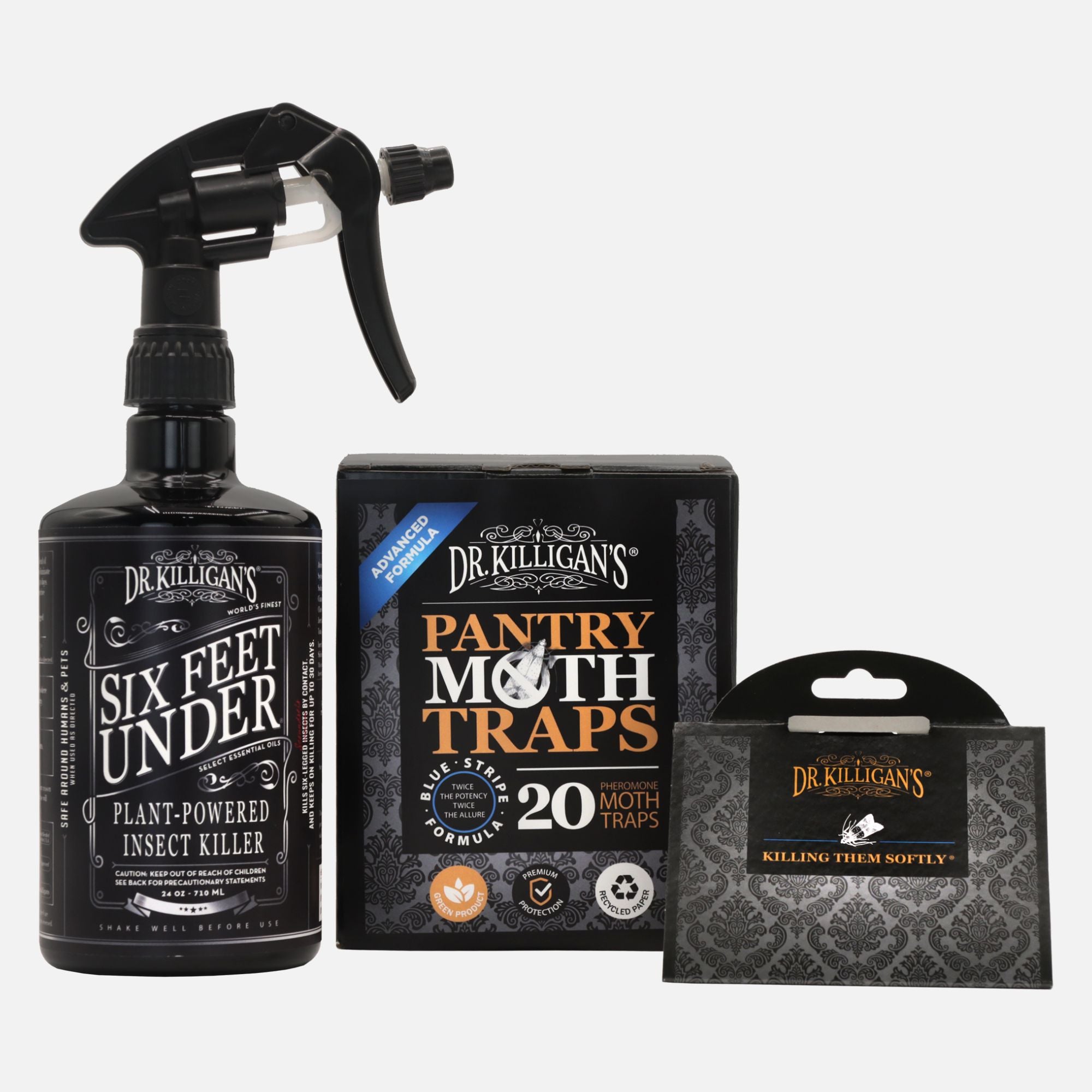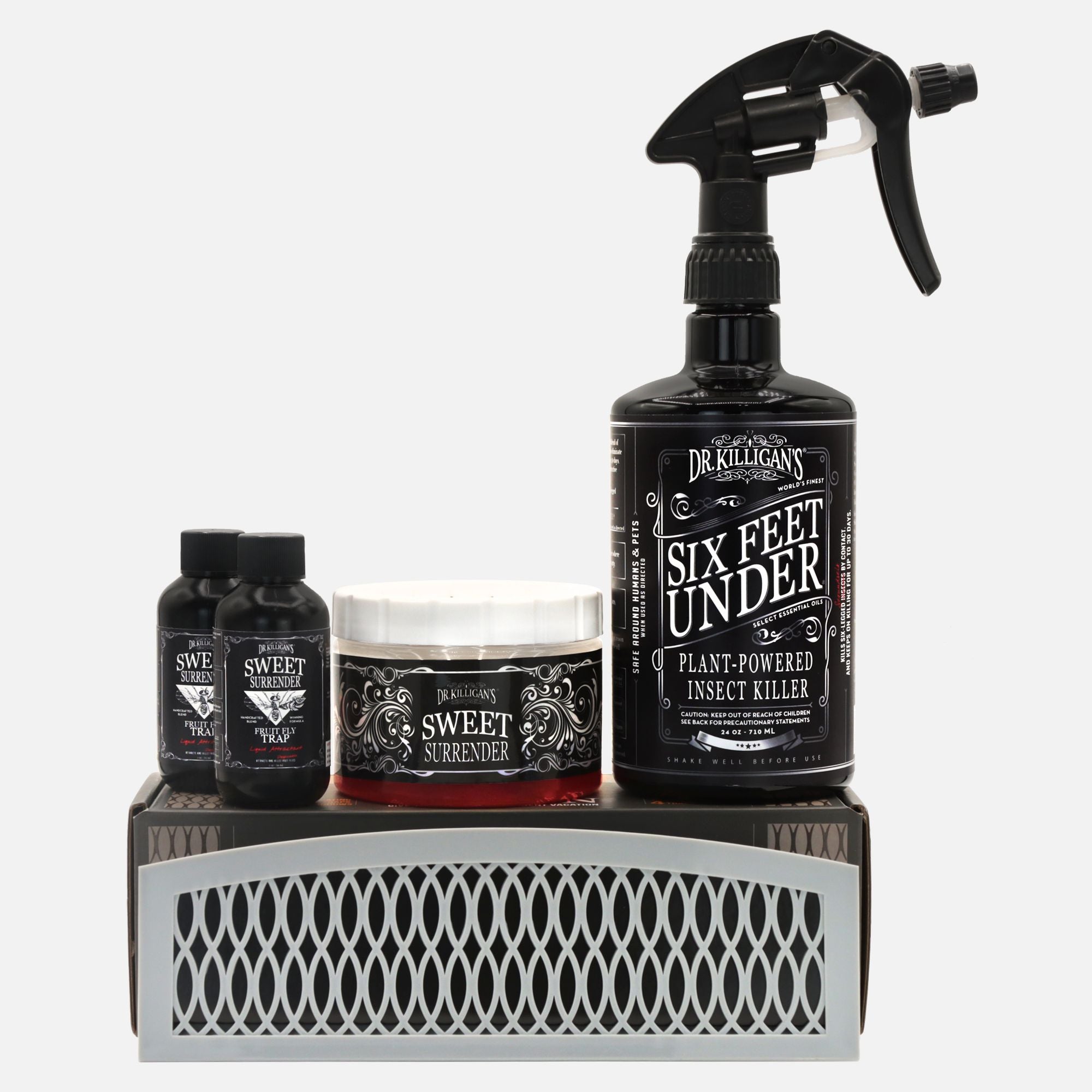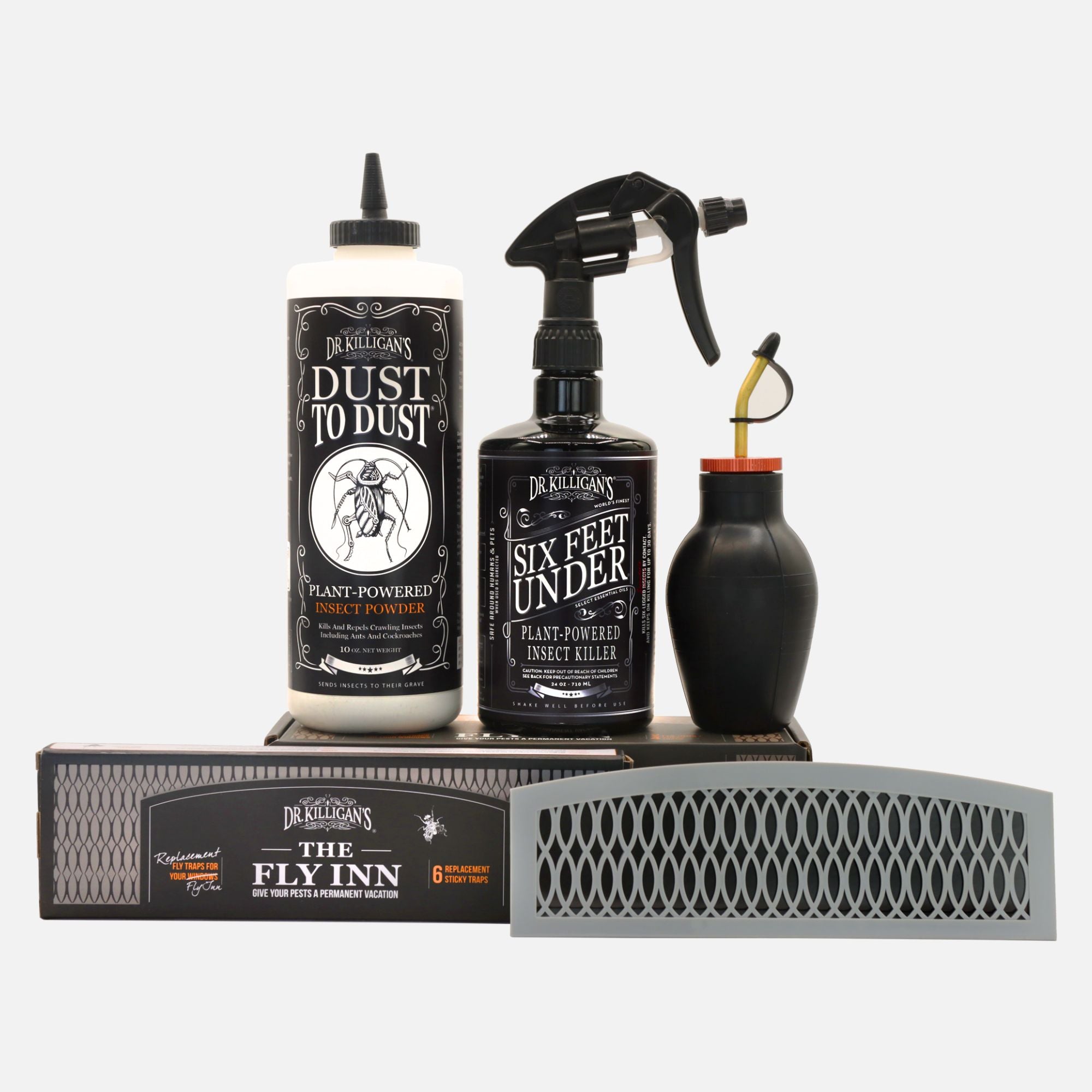If you find a small swarm of bees in your home, stay calm, breathe deep and keep your distance until you have armed yourself with the necessary knowledge and tools to overcome this obstacle.
Handling a few stray bees yourself is feasible, when you fear your spouse, child, dog, cat, gerbil or other family member may (accidentally) get stung. Bee stings to unsuspecting home dwellers (or visitors) can cause a terrible disruption to your day.

Fortunately, you don't need harmful pesticides for bee control. We'll cover five methods that are humane, effective and pesticide-free:
- Use a vacuum cleaner
- Make a soapy water (not vinegar) spray
- Apply diatomaceous earth with the Insect Buster
- Plant bee-repelling flora
- Contact a beekeeper to relocate the hive
This article will guide you on how to implement these strategies to safely repel and remove bees.
How do I know what stinging insect I'm dealing with?
There are two types of bees that are most likely to be seen in and around your home: the bumblebee and the honeybee. It’s also common to see two types of social wasps: yellow jackets and paper wasps.
Identify the stinging insect you're dealing with by their distinct features:

- Bumblebees are fuzzy, medium-sized, round-bodied and have yellow and black stripes.
- Honeybees are not fuzzy, but have some hairs on their body. They are smaller-sized, slender-bodied and have amber and black stripes.
- Yellow jackets are smooth-bodied, big, have a thin waist and have bright yellow stripes.
- Paper wasps are smooth-bodied, thin, have a thin waist and are generally black or brown with yellow or brown striping.
The wasps—yellow jackets and paper wasps—are more aggressive and will more readily sting. Because of this, you may feel safer tackling the less aggressive stinging insects and leaving the more bellicose types to the professionals.
Before bees establish a nest, here are five methods to deter and remove them. For hives that are already formed, consider contacting a professional beekeeper for safe removal.
How to get rid of and repel bees
1. Use a vacuum cleaner
One of the best ways to get rid of (and possibly kill bees, if killing is desired) is to vacuum them up. This method is easy and quick, and your risk of being stung is very low. Simply remove the head of the vacuum cleaner, suck them up with the powerful pipe and then turn your vacuum cleaner off. Trapped bees can be brought to a local beekeeper or the forest. Do what you can to release these flyers back into the wild.
2. Make a homemade bee spray

Mixing soap with water significantly decreases its surface tension, essential for penetrating a bee's spiracles—tiny holes allowing oxygen in. Normally, water's high surface tension prevents this. However, soapy water can infiltrate these spiracles, leading to instant death for bees, as they attempt to breathe in the liquid—a fatal error for air-breathing creatures. The bee must be completely coated with soapy water to ensure it works. This method is also effective against wasps.
Homemade bee killer spray directions: Mix 1 part water to 4 parts dish soap. Pour into a plastic bottle with a good-spraying nozzle. Spray all bees, doing so as you see them for one full day.
It’s important to note that vinegar will not work as a bee killer. Though totted as a natural bee repellent, it’s simply not true, according to the Honey Bee Suite. He writes that bees are accustomed to acidic environments and that household vinegar, with a solution of 5% acetic acid with an average PH of 2.5, isn’t enough to kill bees. In fact, beekeepers will even use distilled apple cider vinegar in their bee feeders to prevent mold and bees aren’t the least bothered by it.
3. Disperse a non-toxic insect powder with the Insect Buster
Food-grade diatomaceous earth works to kill insects by lacerating their exoskeletons and dehydrating them. If a bee comes into contact with such a powder, death is a possible outcome. A bee, covered in the powder, will groom itself in an attempt to remove it from their body. This simple movement will aid the powder in cutting into their exoskeleton.
Though death is possible, as written above, it is not imminent. A bee’s body is covered with slick hairs that prevent dehydration of body fluids. Also, a bee can vibrate its wings to remove the dust and protect itself.
Therefore, the best use of DE in getting rid of bees is to treat blossoms and other bee-attracting plants with it, to serve as a bee deterrent. Use the Insect Buster for a precise, hyper-targeted distribution method. I recommend this only if you or your family members are highly allergic to bees, as we don’t encourage targeting (and killing) these beneficial insects. Killing bee pollinators can not only sabotage your own garden space, but can also cause wider damage throughout your local ecosystem.
4. Plant bee-repelling plants
Many plants are known to repel bees, including neem, mint, citronella, eucalyptus, cloves, wormwood, geraniums, basil, cucumber, marigolds and pennyroyal. Here, we will highlight three bee-repelling plants.

Geraniums
These brightly colored flowers, especially the red varieties, are fantastic bee repellers. They will even get rid of and keep carpenter bees away. Though it may seem counterintuitive that a flower would repel bees, geraniums contain little to no pollen and carry a smell that bees dislike.
What to know: Geraniums require 4-6 hours of sunlight, should be brought inside (either placed in your basement or garage) when temperatures drop and need soil that drains well.
Mint
The strong scent of mint is unappealing to bugs, including bees, effectively repelling them. It can even be used to create a bee-repellent spray.
What to know: Mint is known to grow rapidly and spread easily, so consider planting it in a pot to keep it contained. It does well in direct sunlight, though it can tolerate shade, and needs moist, well-drained soil.
Wormwood
Wormwood (Artemisia) contains a substance called absinthe, which is toxic to insects. Its sharp, pungent scent alerts bees and wasps of the potential danger, so these insects typically steer clear. In fact, wormwood is one of only a few plants known to discourage wasps (and deer and rabbits).
What to know: Wormwood can kill off other plants in close proximity, so exercise caution in placement. This drought resistant plant needs direct sunlight and well-drained soil.
5. Call a beekeeper and relocate the hive
Some bees, such as honey bees, will swarm and then move on within a day or two. If you find that this is not the case—that the bees are in fact establishing a hive—and that the location of the hive is a threat to you and your family, then it’s important to have it removed. Bees can nest in tight spaces, siding and other hard-to-reach places, which an expert will be prepared to handle.
Contact a professional. They can typically be found via a beekeeping association or even on facebook. Look for someone local, as the hope would be that they are able to transfer the bees to a safer location. If you find that you’re having difficulty locating someone, call the American Beekeeping Federation.




















